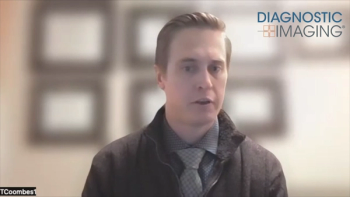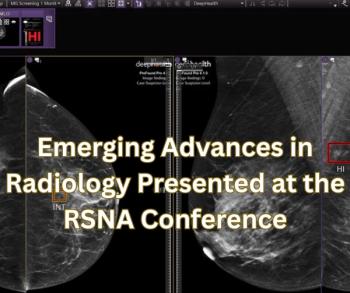
Postprocessing injects dose of reality into CT
The heart and kidneys appear in their true surroundings in this fusion of science and art composed by scientist turned photojournalist Andrew Tsiaras.
The heart and kidneys appear in their true surroundings in this fusion of science and art composed by scientist turned photojournalist Andrew Tsiaras. The images were shown in the Philips Medical Systems booth during the RSNA meeting as tools to help physicians communicate with their patients. (These and other images have also been exhibited and published in books for the general public.) The images are based initially on data sets acquired using Philips CT scanners and processed into 3D, but the finished product definitely does not come from these modalities. Tsiaras and his team at Anatomical Travelogue use the volumetric models as their electronic canvases, painting pseudorealistic landscapes of the inner body-inserting plaques into coronaries, ballooning the carotid into an aneurysm ready to burst-always basing their work on documented gross pathologies. The goal, according to Tsiaras, is to bring the effect of poor health habits to the minds of viewers and, maybe, in the process, effect a change for the better. (Images created by Anatomical Travelogue in partnership with Philips Medical Systems)
Newsletter
Stay at the forefront of radiology with the Diagnostic Imaging newsletter, delivering the latest news, clinical insights, and imaging advancements for today’s radiologists.




























